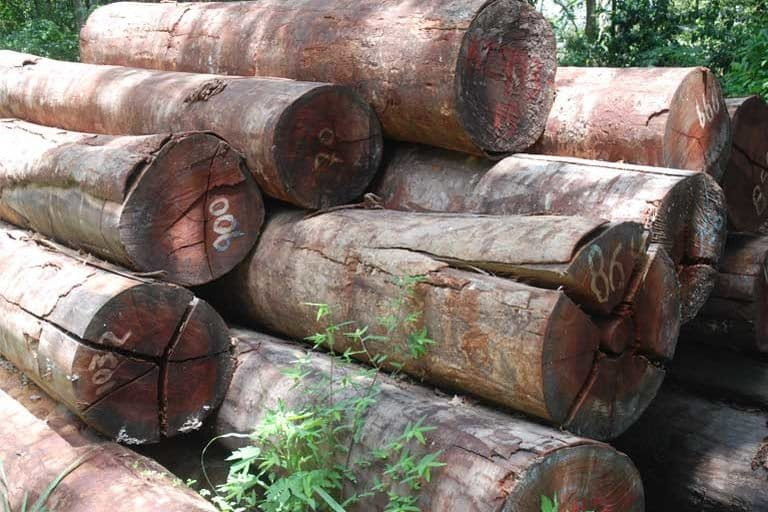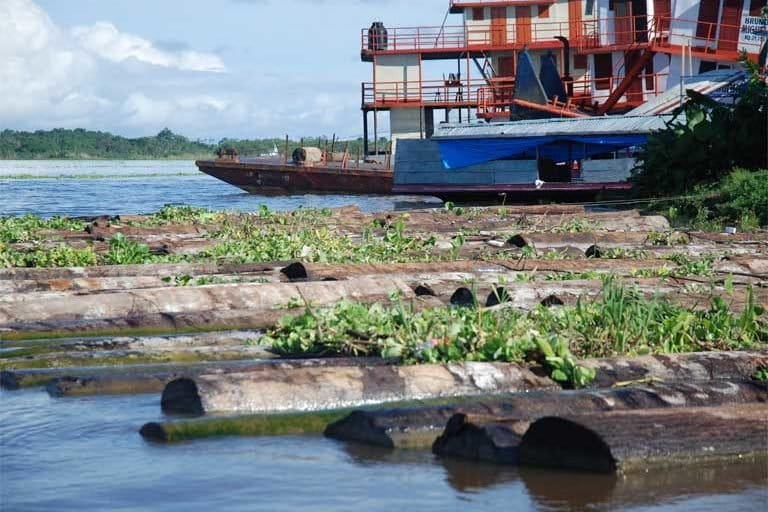- Peru’s pioneering forest inspection agency OSINFOR has taken the lead in exposing the rampant illegalities that have dominated Peru’s timber trade for decades, but it has done so only because it has been independent of other government ministries.
- In December 2018, Peru moved OSINFOR into the Ministry of Environment, effectively stripping it of its independence, a decision that could gravely compromise OSINFOR’s effectiveness in the future.
- This move also arguably violates the Trade Promotion Agreement between Peru and the United States, which entered into force 10 years ago and stipulates that OSINFOR must be “independent.”
- The U.S., a top importer of Peruvian timber, has a major responsibility for ensuring that it is produced legally and therefore must insist Peru respect the Trade Promotion Agreement by making OSINFOR independent again. – This post is a commentary. The views expressed are those of the author, not necessarily Mongabay.

The Office of the U.S. Trade Representative (USTR) has reportedly just done something for the first time. Almost exactly 10 years after the U.S. Trade Promotion Agreement with Peru (PTPA) entered into force on 1 February 2009, the USTR requested – and recently held – “environment consultations” with the Peruvian government.
The reason? In December, Peru moved its pioneering, effective, and internationally-respected forest inspection agency OSINFOR from the Presidential Council of Ministers into the Ministry of Environment, effectively stripping it of its independence and seriously compromising its capacity to expose illegal timber laundering and other forest crimes in the Amazon and elsewhere.
That move arguably violates the PTPA whose annex on Forest Sector Governance explicitly states that “OSINFOR shall be an independent and separate agency,” as initially intended in 2000 when a new legal regime on forests began to be rolled out in Peru. It was precisely this commitment that led to OSINFOR in June 2008 effectively being “reincarnated” and made independent of any Ministry.

The USTR statement announcing its request for consultations with Peru claimed that it is an “unprecedented” step and a clear sign that the Trump administration “takes monitoring and enforcement of U.S. trade agreements seriously, including obligations to strengthen forest sector governance.” According to the USTR Robert Lighthizer: “OSINFOR has played a critical role detecting and combatting illegal logging, and we are gravely concerned that its independence is threatened. I urge Peru to abide by its obligations and restore OSINFOR’s separateness and independence, as called for in the PTPA.”
No doubt there are other reasons, but here are 10 why I think the U.S. must insist that Peru respect the PTPA by again making OSINFOR independent of any Ministry:
- The vast majority of Peruvian timber is illegally extracted, even though that timber might appear to be legal farther down the supply chain when it is accompanied by the required – but falsified – paperwork. This has been reported again and again for many years by numerous institutions, including the World Bank, the United Nations Food and Agriculture Organisation, the International Tropical Timber Organisation, the Centre for International Forestry Research, the Environmental Investigation Agency, Global Witness and Al-Jazeera, as well as OSINFOR itself. Estimates of illegal timber percentages have ranged as high as 90 percent. In a recent New York Times article urging the U.S. to “get tough on timber with Peru,” illegal logging was described as “almost laughably rampant.”
- Despite the efforts of other institutions, it is OSINFOR that has taken the lead – most rigorously, most regularly, most persistently – in exposing the extent of illegal logging in Peru. It has done this by making thousands of harvest area inspections to verify whether or not timber was truly extracted from where loggers, harvest area land owners, sawmills, exporters and others claim. According to OSINFOR in mid-2018, 67 percent of the timber from inspected harvest areas in 2016 and 2017 was “unauthorized,” down from a previous high figure of 89 percent.
- It was OSINFOR’s independence under the Presidential Council of Ministers that enabled it to operate so effectively. Before 2008, the agency was inside the Ministry of Agriculture, where it was largely useless. It was only after its “reincarnation” in June 2008, following the commitment made in the PTPA with the United States, that it began regularly making harvest area inspections and exposing widespread illegalities.
- The U.S. has been importing illegal timber from Peru for many years, despite the PTPA’s stated aim to contribute to “high levels of environmental protection” and the Lacey Act Amendment in 2008 banning illegal timber and other products – not just wildlife, fish and plants – from entering the country. If OSINFOR continues inside the Ministry of Environment, it will likely be far harder to stop future U.S. illegal timber imports.
- Despite this lamentable situation, the U.S. has taken almost no concrete action over the years to stop illegal timber being imported from Peru. Rare exceptions include blocking the now notorious Yacu Kallpa ship in Houston in September 2015, and a request to Peru’s government to verify the legality of a previous Yacu Kallpa shipment which led to a Peruvian company, Inversiones La Oroza, being suspended from exporting to the U.S. for three years. Both actions were only possible because of an independent OSINFOR. Again, if the agency continues inside the Ministry of Environment, it will likely be even harder for the U.S. to take similar action in the future.

- The U.S. is one of the top three export destinations for Peruvian timber, along with China and Mexico, both of which subsequently re-export timber products to the U.S. too. Although the quantities exported is reported to be small compared to that consumed domestically, it is clear therefore that the U.S. has a major responsibility to help ensure Peruvian timber is legally extracted. With OSINFOR inside the Ministry of Environment, it is likely that in the future the U.S. will import even more illegal Peruvian timber.
- In recent years, the U.S. has provided more than US$90 million in “technical assistance and capacity building” to improve forest sector governance in Peru, according to Michael Froman, Robert Lighthizer’s predecessor as the U.S. Trade Representative. Agencies including USAID and the U.S. Forest Service have been involved, and a series of projects have been initiated to provide that assistance. Failure to insist on an independent OSINFOR in accordance with the PTPA undermines – or even potentially makes a mockery of – other U.S. initiatives involving the Peruvian forest sector.
- If not the U.S., then who? Neither China nor Mexico have trade agreements with Peru stipulating OSINFOR’s independence. In fact, neither China nor Mexico even have domestic legislation banning illegal timber imports.
- OSINFOR’s mandate is to “supervise and oversee” the “exploitation and conservation of forest and wildlife resources,” among other things, which means supervising and overseeing numerous issues for which the Ministry of Environment is responsible. But how can OSINFOR be inside the Ministry and partly have oversight of it at the same time? According to the Environmental Investigation Agency and other NGOs, putting OSINFOR inside the Ministry “generates a clear conflict of interest.”
- The Peruvian Amazon is – almost needless to say – a truly astonishing place. It comprises the planet’s fourth biggest tropical forest, boasts extraordinary biodiversity, and has a population of at least 3.5 million – including more than 60 indigenous peoples. Illegal logging there encourages not only unsustainable deforestation and forest degradation, but land grabbing and land trafficking, corruption, exploitation, debt bondage, prostitution, social conflict, violence, murder, money-laundering, organized crime, the cocaine trade and the invasion of existing – or proposed – reserves inhabited by indigenous people living in “isolation.” In exposing the illegal timber trade all these years, OSINFOR – independent from any Ministry – has arguably been fighting against all those crimes, abuses and horrors too. Its independence is essential – for Peru, for the Amazon, for the global climate, and for consumers and governments in countries like the United States.
David Hill is a freelance journalist focusing on Latin America, human rights and the environment. For more information see his website: www.hilldavid.com
FEEDBACK: Use this form to send a message to the author of this post. If you want to post a public comment, you can do that at the bottom of the page.

